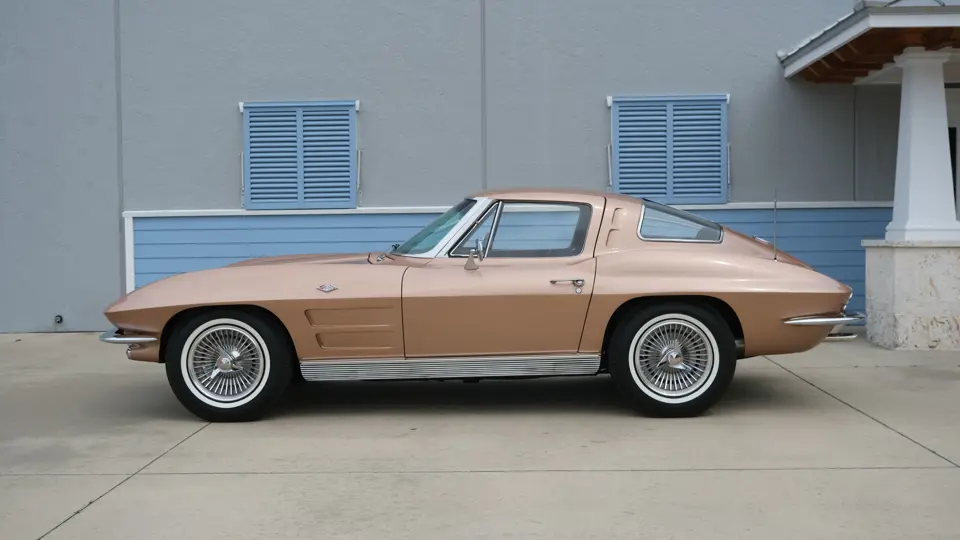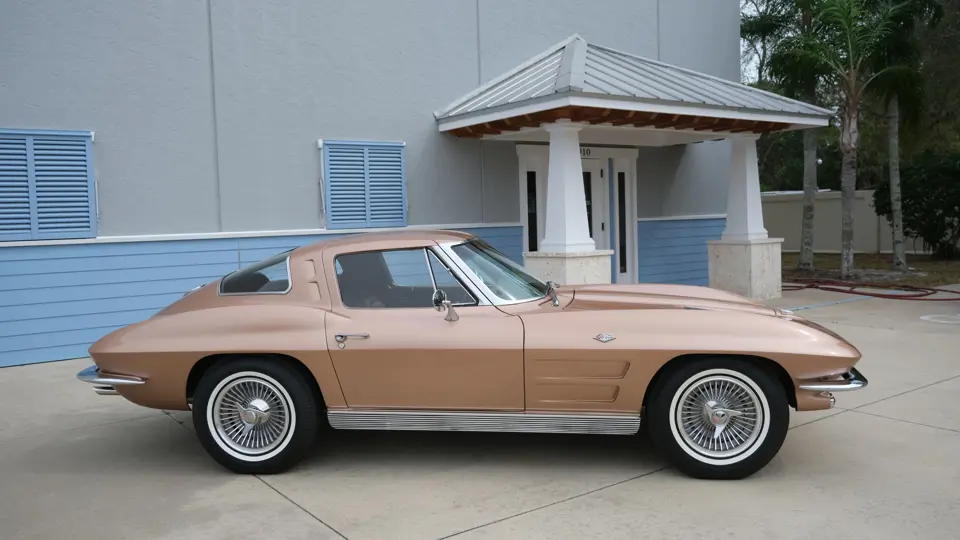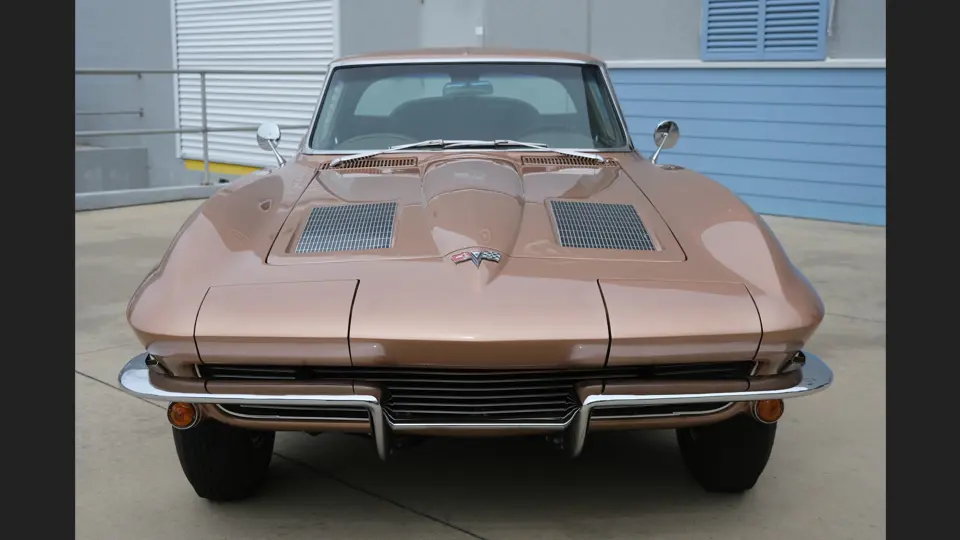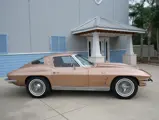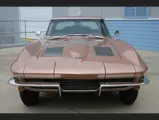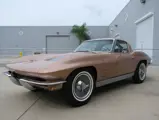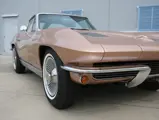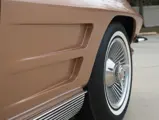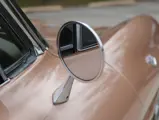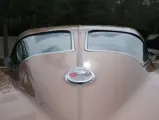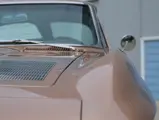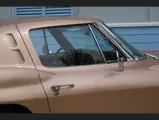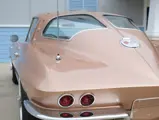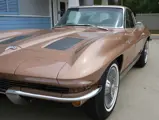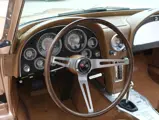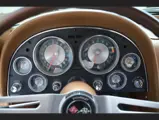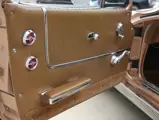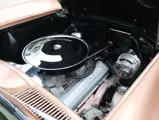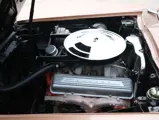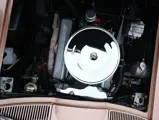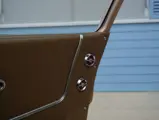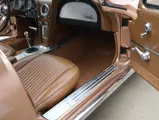
1963 Chevrolet Corvette Sting Ray Coupe
{{lr.item.text}}
$150,000 - $175,000 USD | Not Sold
{{bidding.lot.reserveStatusFormatted}}
- Beautiful example of one of the most iconic Corvettes, the 1963-only “Split-Window” coupe
- Said to be a fresh restoration to factory standards; trim-tag correct colors of Saddle Tan over Saddle vinyl upholstery
- Riding on correct, 15-inch, Kelsey Hayes, knock-off, “turbine,” aluminum wheels wearing thin whitewall tires
- Equipped with power steering, teak wood steering wheel, and AM radio
- Believed to be one of just 10,594 1963 Corvette String Ray Coupes
The Chevrolet Corvette received quite an update for its 10th birthday. The all-new second-generation model—colloquially called the C2—debuted for the 1963 model year as the culmination of more than half a decade worth of research, both on and off the track, and with an aerodynamic design by Corvette masterminds Bill Mitchell and Zora Arkus-Duntov. It was an instant sensation. So impressed were Arkus-Duntov and Mitchell with their creation, they borrowed the name of a racecar they had developed in secret at General Motors: Sting Ray. The body was extensively tested and tweaked for aerodynamics in wind tunnels with the resulting design being a radical shift from previous models. The outgoing Corvette’s signature, open, quad headlights were now hidden behind what would become a new Corvette staple of hide away headlights. Another Corvette first, customers were offered the choice of a coupe sporting a fastback body with a raised “spine” running the length of the roof and continuing down the back, bisecting the rear window and terminating just above the rear cowl.
The resulting design was exceptional and customers clamored for a chance to own one, sometimes waiting months for delivery. New design was found under the hood as well. A ladder-type frame replaced the X-type frame of the previous generation, which lowered the center of gravity while also improving handling. Gone were the solid, floating rear axles, replaced with the racing staple of fully independent suspension. A fiberglass body was retained but the new Corvette was stiffened with nearly twice as much steel “superstructure” as on earlier models.
After only one year, constant customer complaints over obstructed, rear visibility prompted the demise of the iconic “split-window” design. Starting with the 1964 model, a “spineless” uninterrupted rear windscreen took its place. For this reason, the first-year C2 coupe has become one of the most sought-after American collector cars, renowned for its combination of smooth, stylish lines and American brawn. Given how prized the “split-window” has become, it is interesting to consider that, at the time, complaints over its design reportedly prompted some dealers to offer a conversion to remove the spine and replace the two glass panes with a single piece of plexiglass.
Said to be the recipient of a recent frame-off restoration, this “split-window” coupe is finished in its trim-tag correct combination of Saddle Tan over matching Saddle vinyl upholstery. An elegant teak wood and aluminum steering wheel compliment the 1963 Corvette’s space-age dash and gauges. Centered in the Saddle Tan vinyl dash are the huge, standard-issue electric clock and signature, vertically mounted AM radio. Under the hood, a small-block, 327-ci, V-8 engine with Corvette-branded, fluted-aluminum valve covers and a chrome air-cleaner delivers the power to the road through correct Kelsey Hayes knock-off “turbine” wheels wrapped in whitewall tires.
In short, this is an excellent example of one of the most iconic Corvette models, ready to stun future generations.
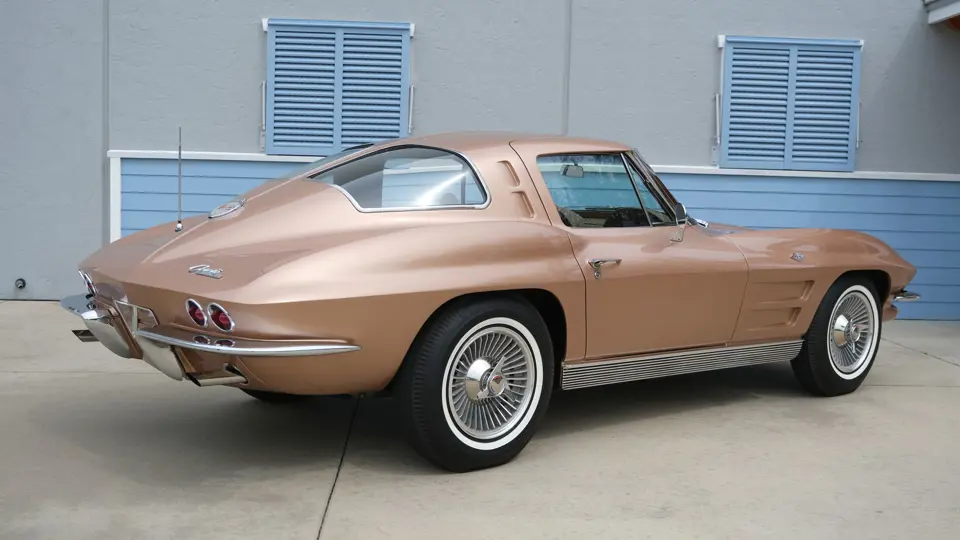
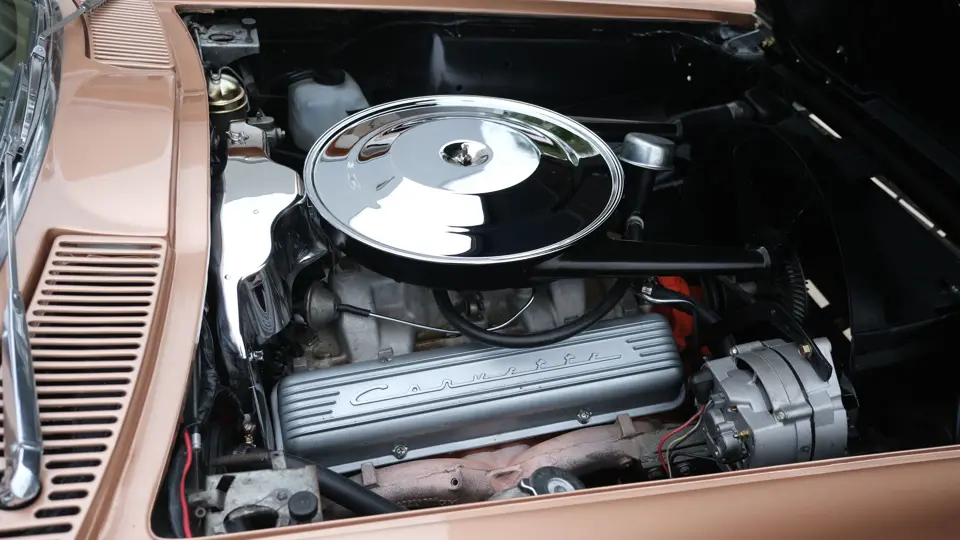



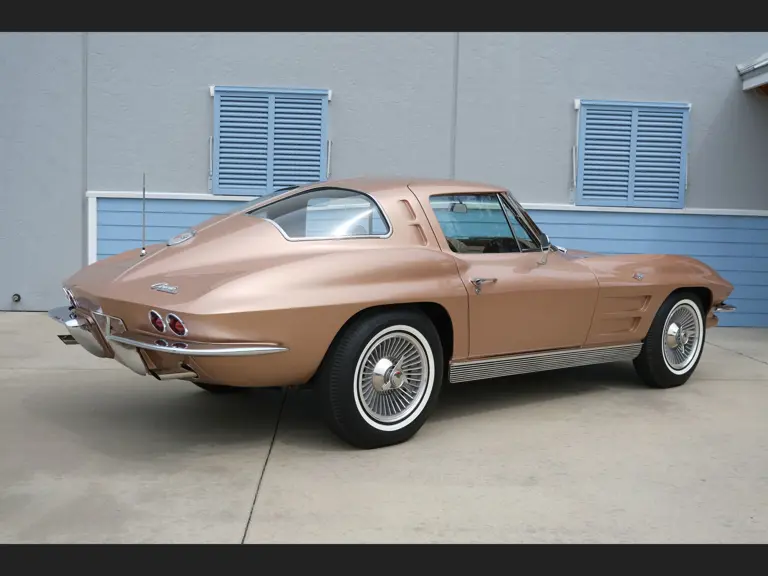
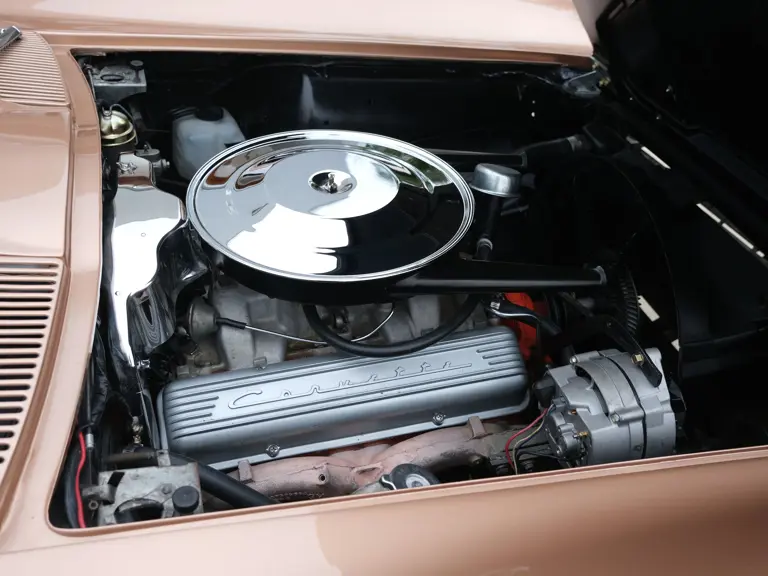
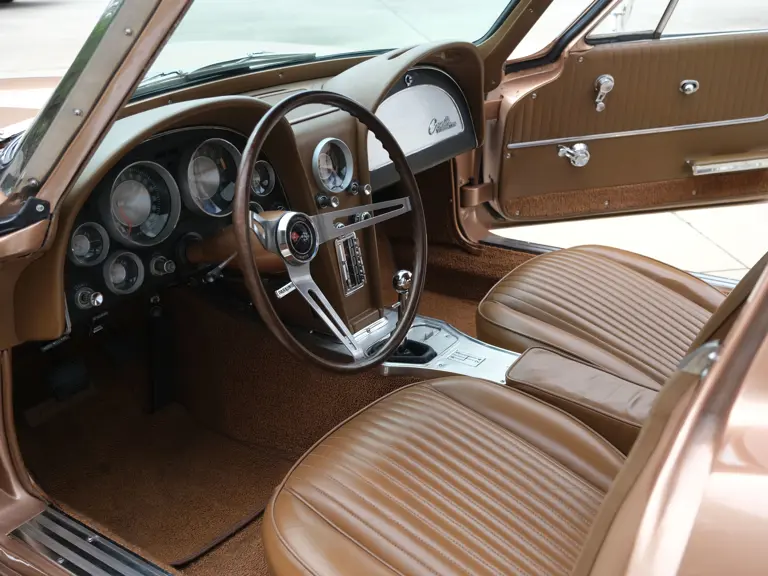
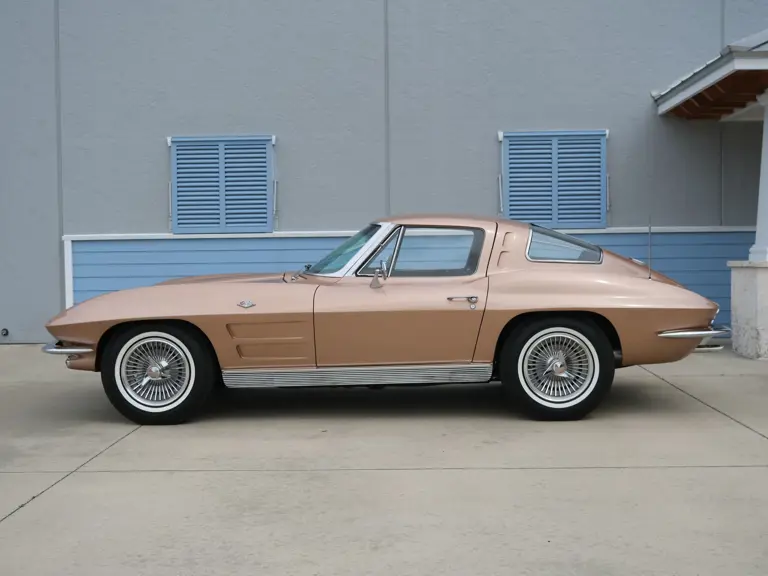
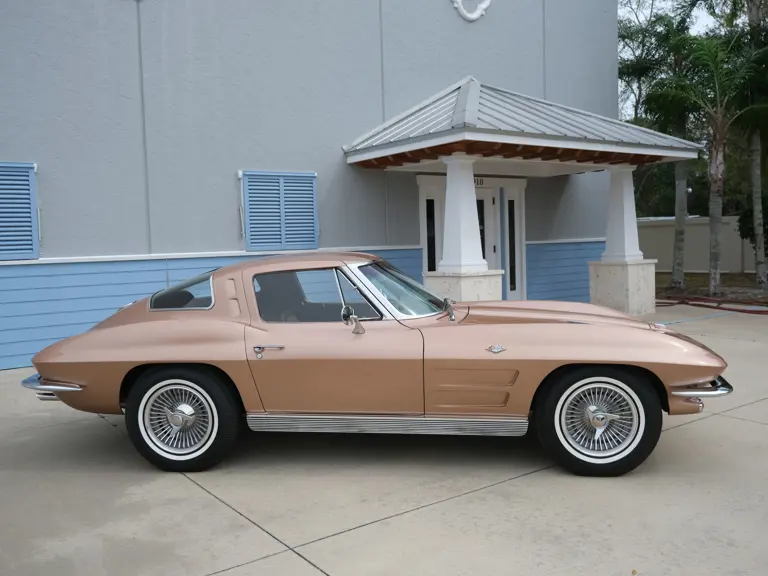

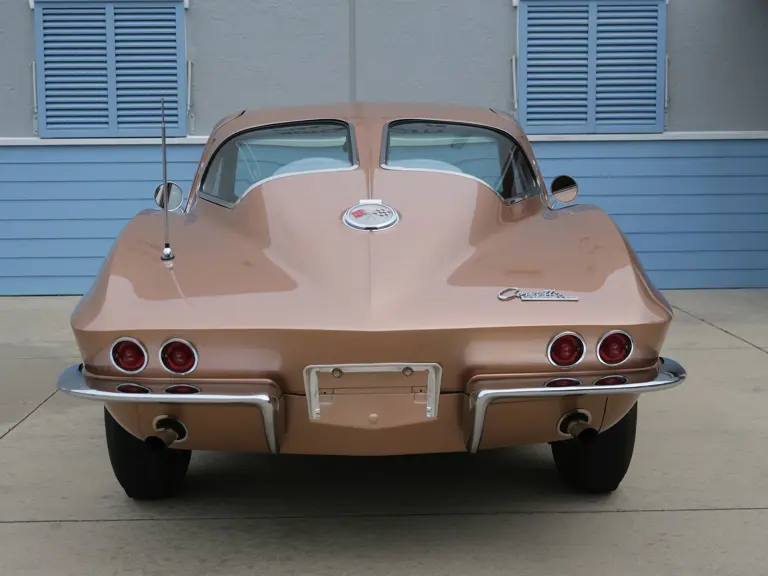
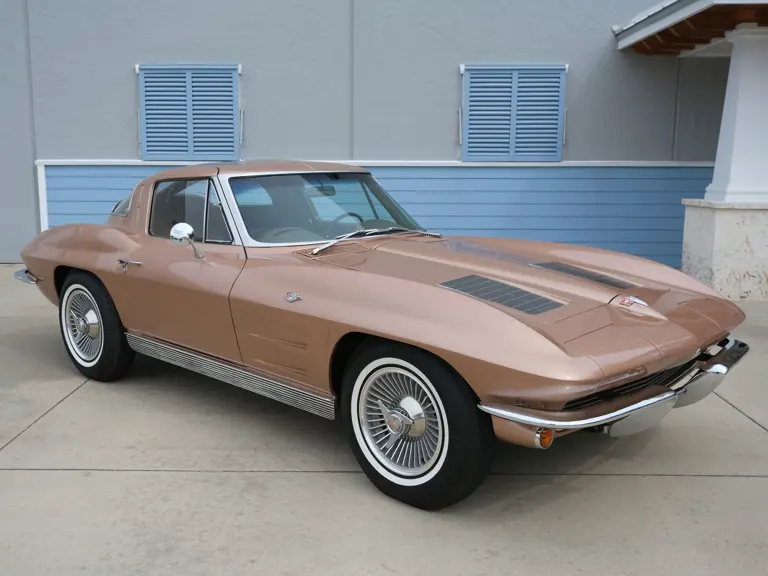
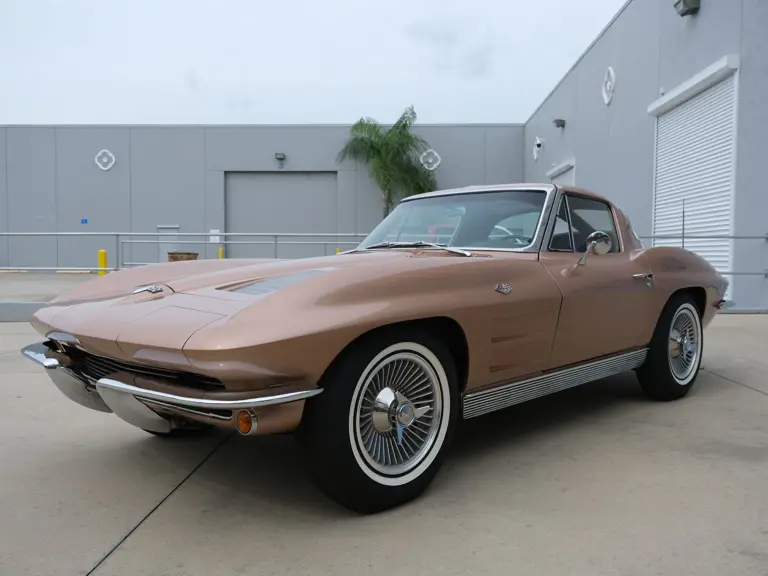
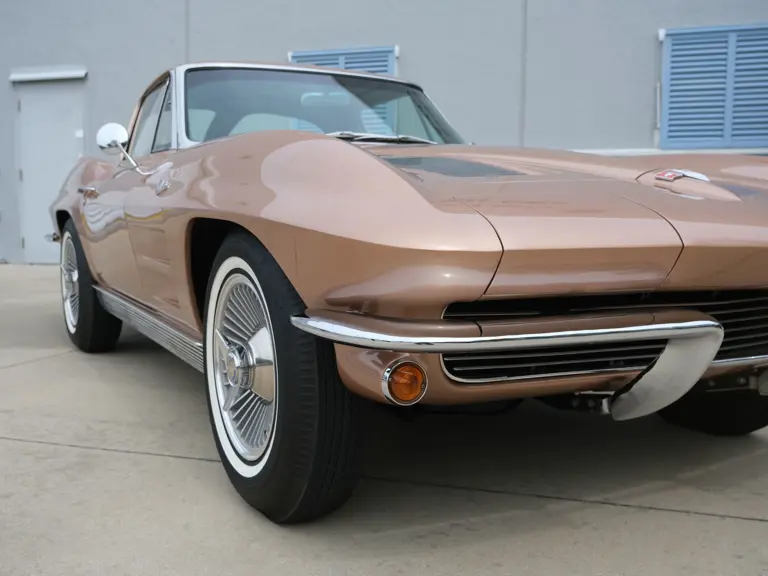
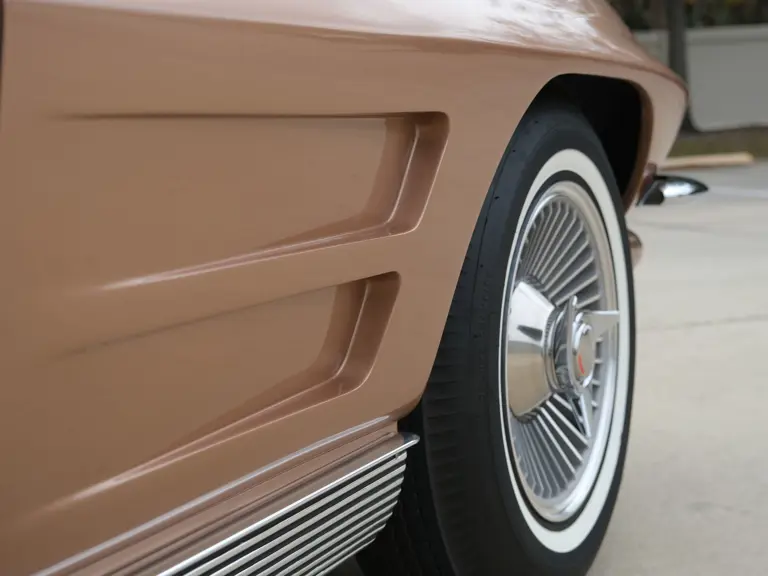
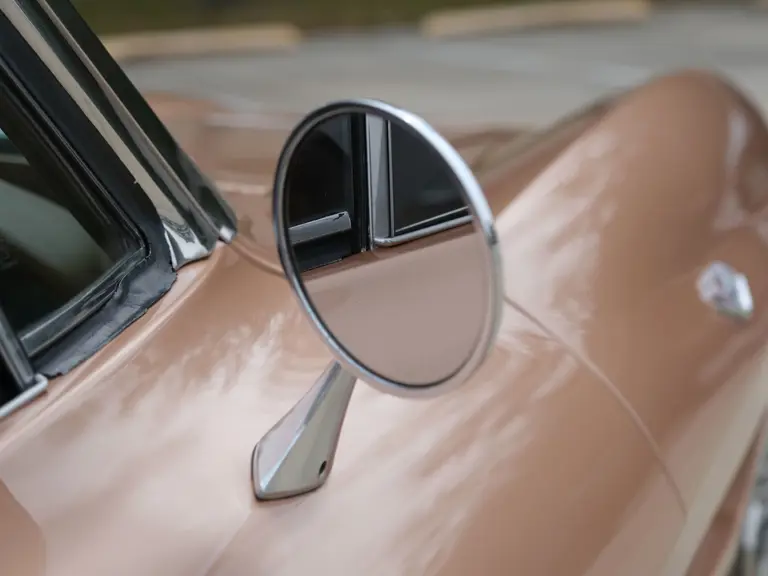

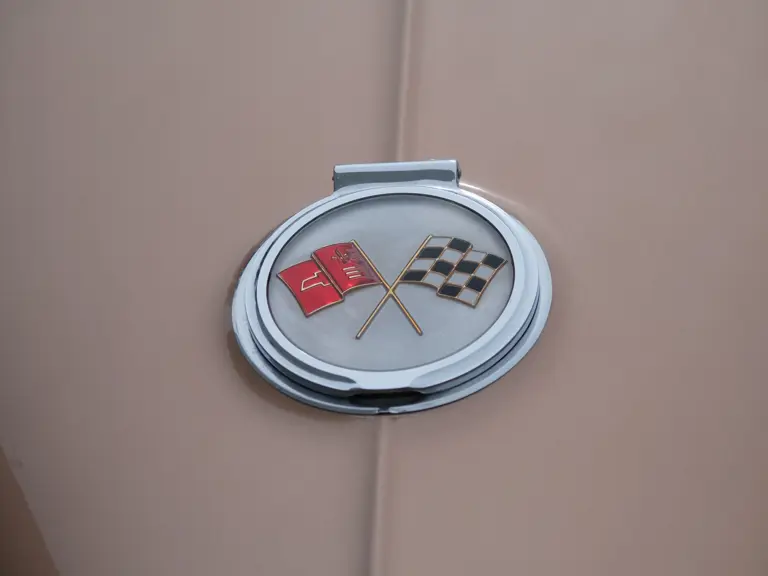
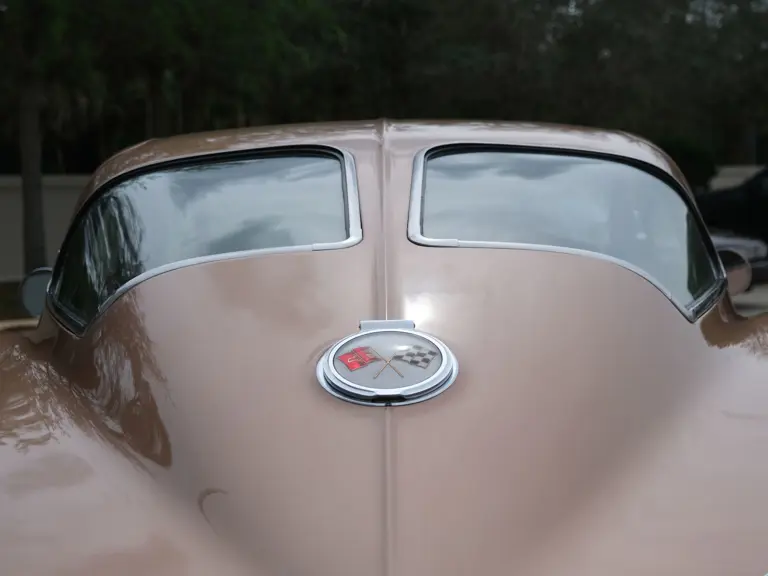
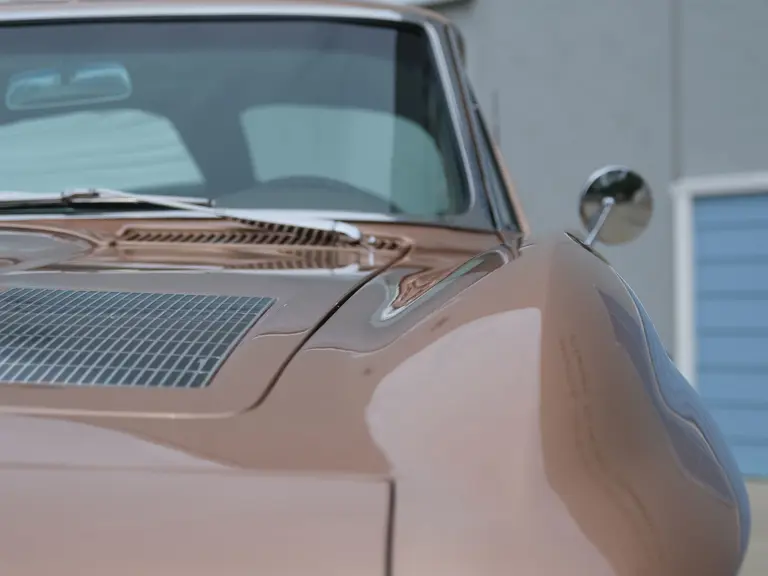

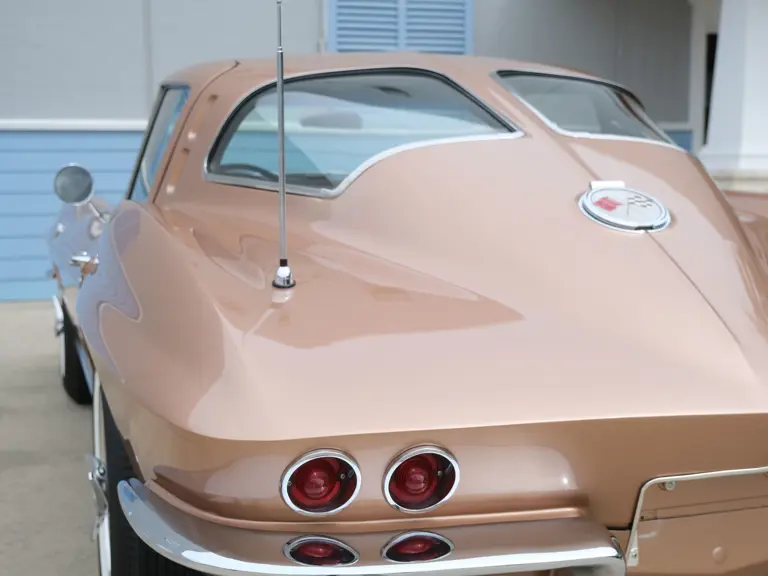
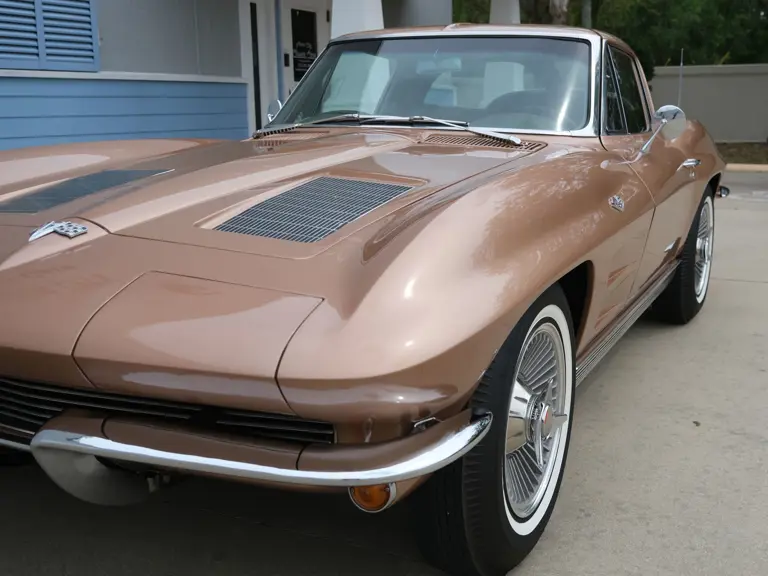
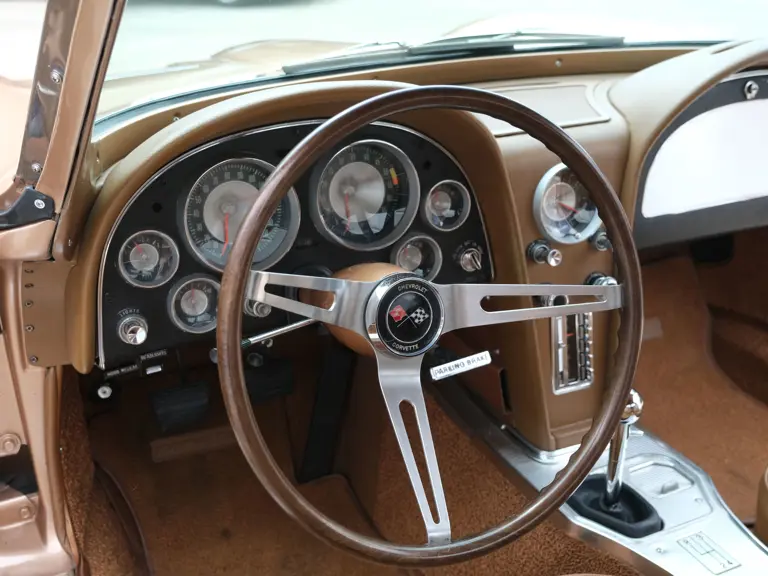
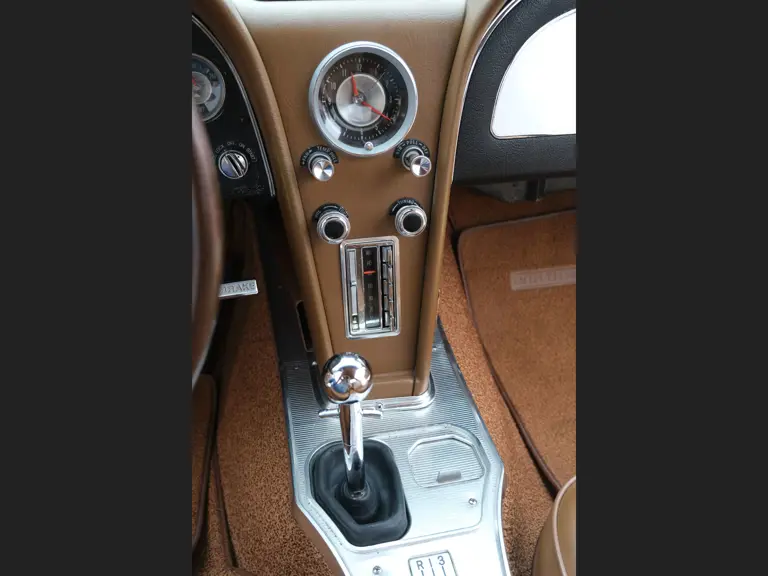

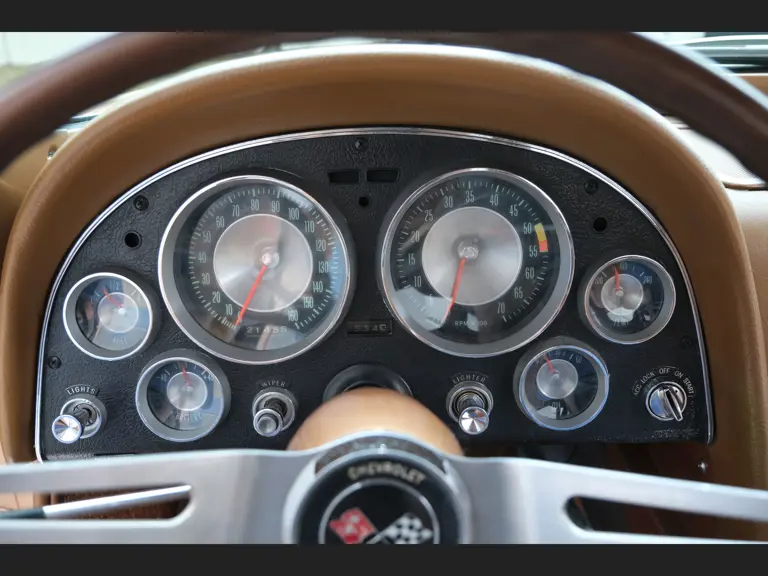
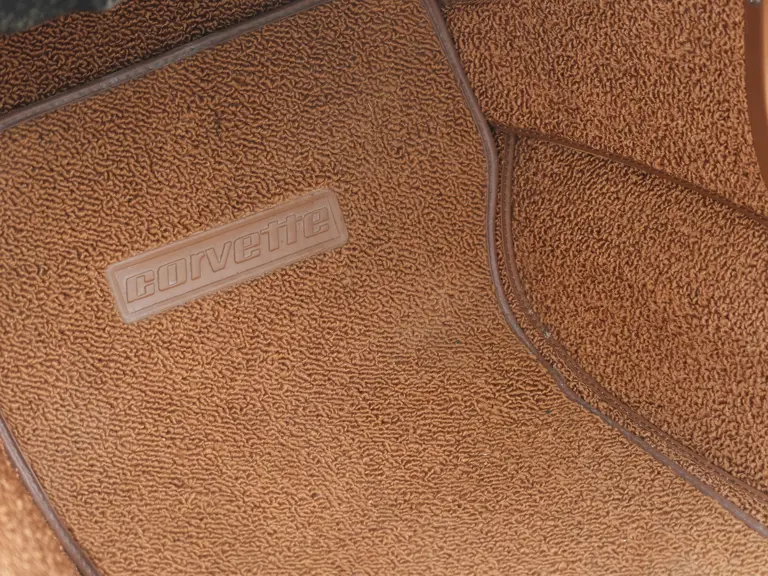

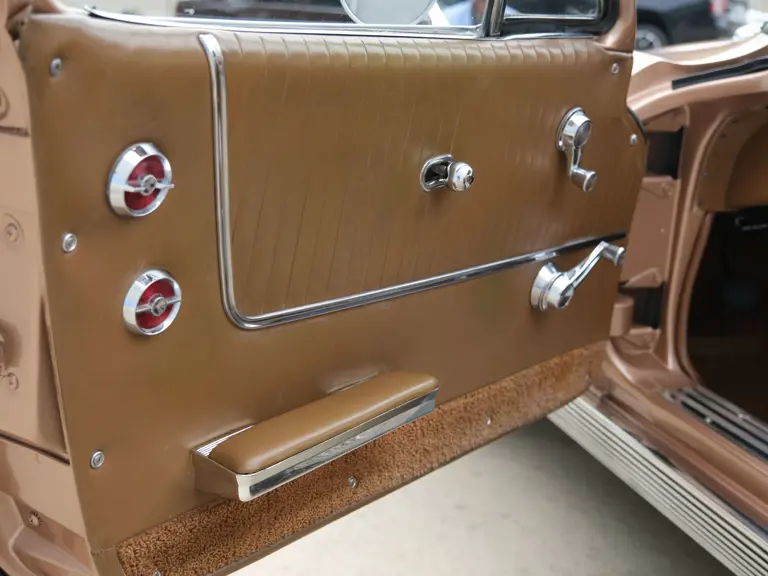
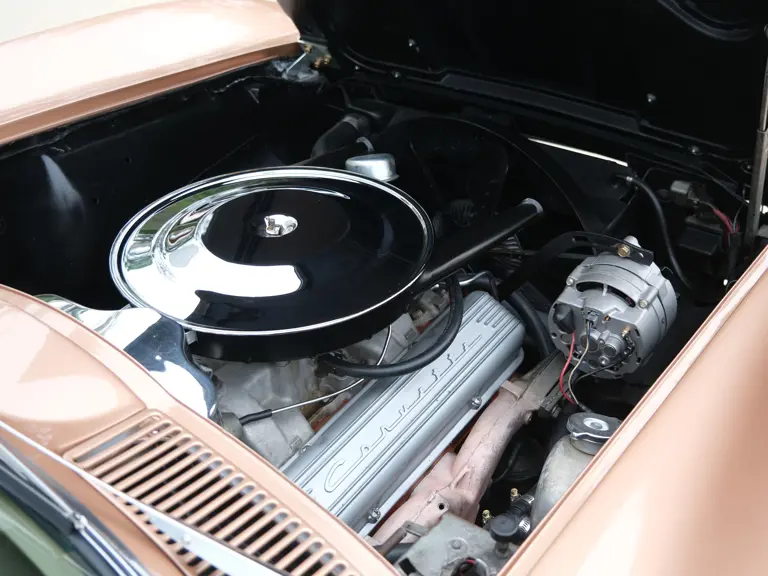
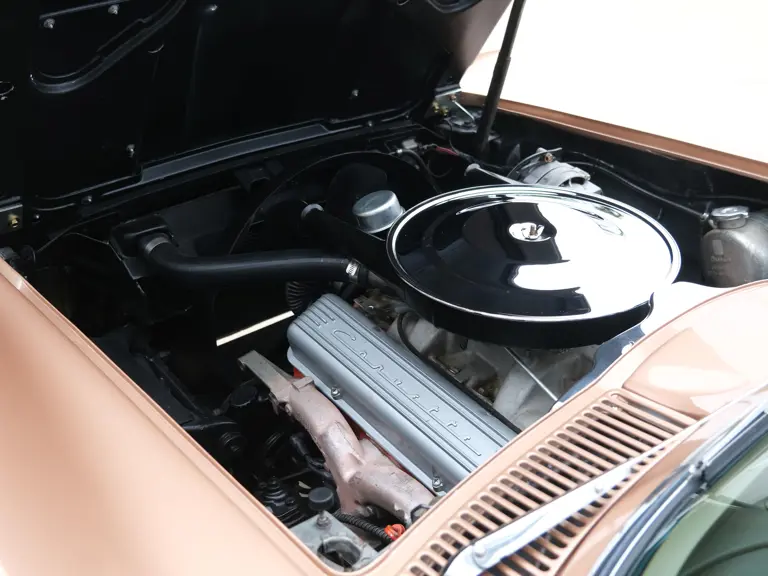

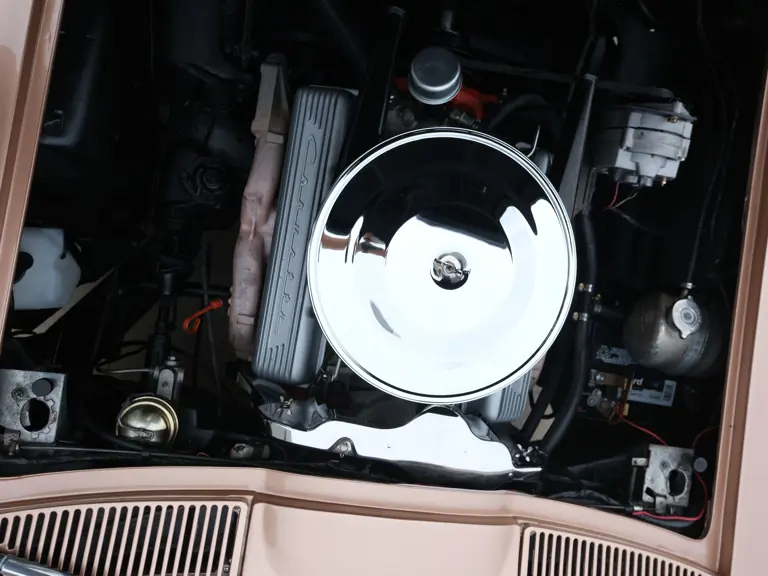
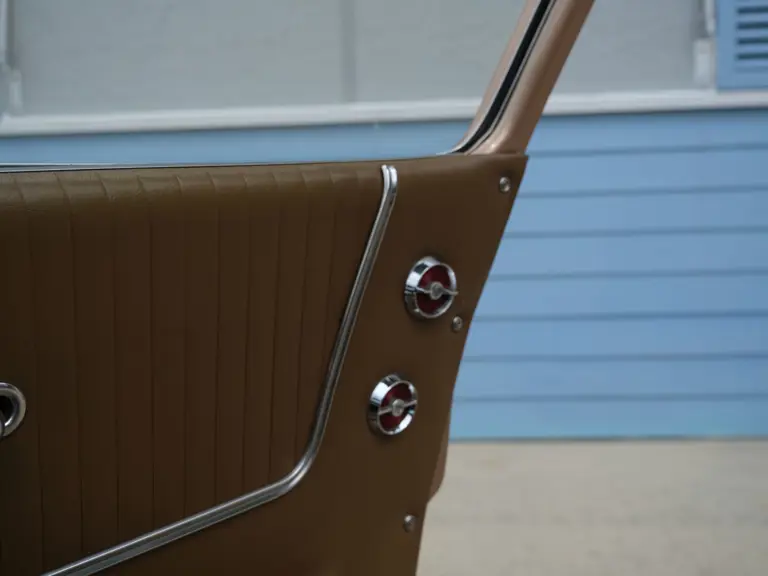
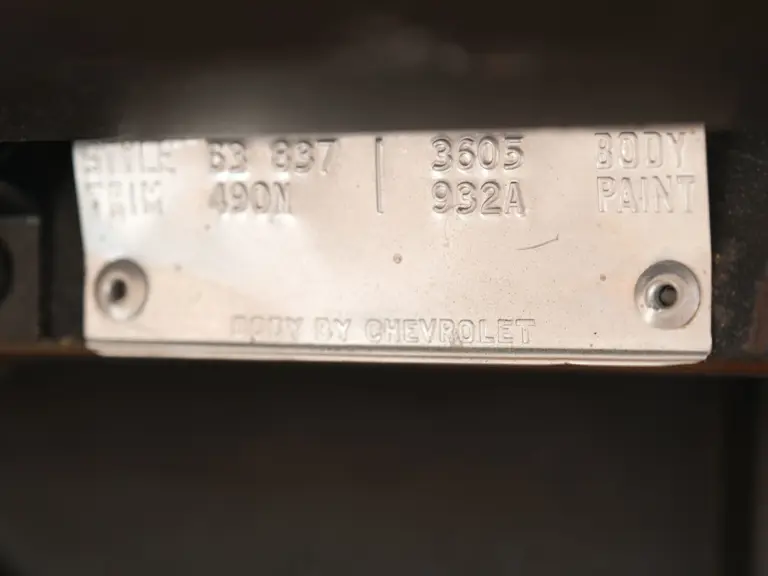
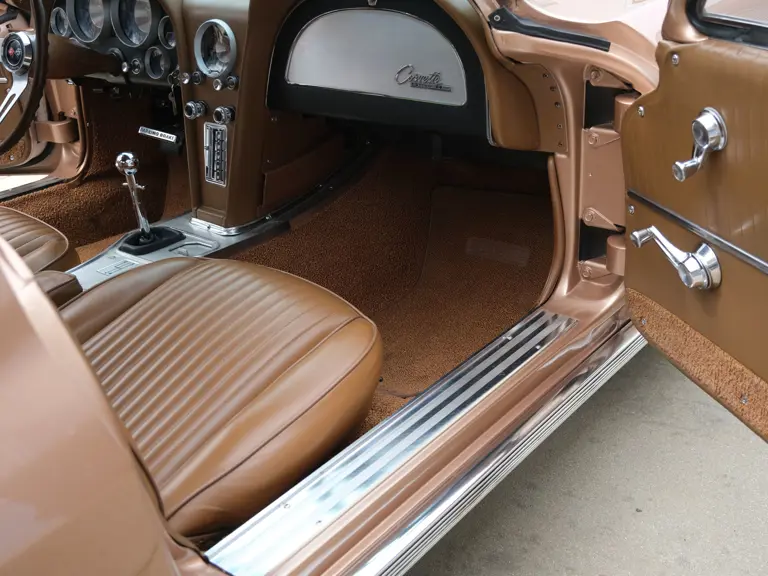
 | Fort Lauderdale, Florida
| Fort Lauderdale, Florida
